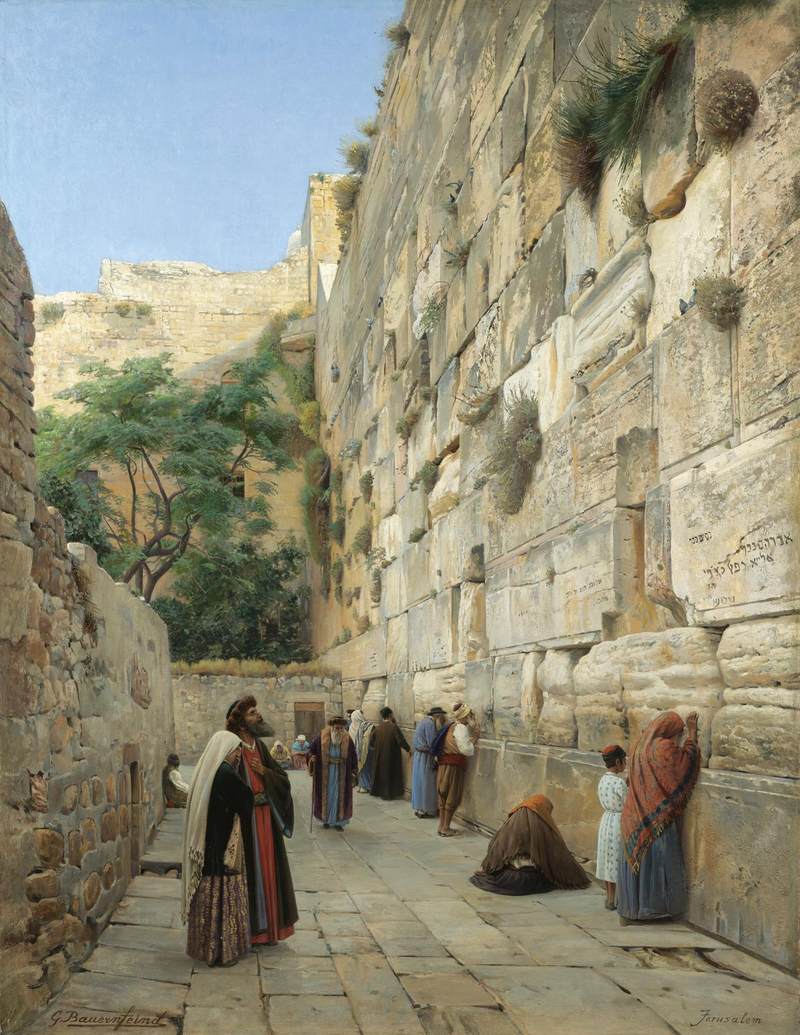Tisha B’Av is often called the saddest day of the Jewish year. It commemorates so many tragedies, including the destruction of both Holy Temples, the Spanish Inquisition and European pogroms. On Tisha B’Av, we sit on the floor and weep as we remember everything that was lost, and recite many special prayers that bring us to the appropriate frame of mind. Sounds kind of depressing, no? But what is sadness, or better yet in Breslov terminology, “brokenheartedness,” all about? Why is it a must, and why do we have a special day dedicated to cultivating it?
Let’s differentiate between brokenheartedness and depression (and all the more moderate forms of it). The Kotzker Rebbe famously said, “There is nothing as whole as a broken heart.” Similarly, Rebbe Nachman taught, “Brokenheartedness and depression are not at all the same. Brokenheartedness involves the heart, while depression involves the spleen. Depression comes from the Other Side and is hated by God. But a broken heart is very dear and precious to God” (Rebbe Nachman’s Wisdom #41). We even have a litmus test to distinguish between the two: “After brokenheartedness comes joy. This later joy is a true sign of a broken heart” (ibid. #45). Clearly, brokenheartedness is a healthy and necessary emotion. It is even something that fosters future joy.
There are two ways to embolden a muscle: by stretching and by strengthening. Stretching muscles causes them to expand. Strengthening muscles means applying a great deal of tension and resistance, forcing the muscles to contract.
This is a great metaphor for our discussion. Imagine a heart expanding and then contracting. The expansion corresponds to the heart’s capacity for love and kindness, which manifests as joy. The contraction corresponds to the heart’s capacity for restraint. Longing for something that you can’t have right now is an example of something that creates resistance and contracts the heart. Both joy and restraint are necessary to maintain a healthy heart, emotionally and spiritually. However, a depressed person’s heart is entirely different. It is cold and stone-like. Such a person experiences anger and possibly rage (based on Tanya, chapter 31).
Every generation has the capacity and responsibility to bring the Mashiach and rebuild the Holy Temple. Therefore, if the Mashiach hasn’t come yet, we can be said to be responsible for the Temple’s destruction. Likewise, each of us has the duty to bring redemption to our personal acts of destruction. By reflecting on these acts – broken relationships, missed opportunities, lack of progress, forgotten aspirations – we create the resistance necessary to strengthen our hearts and repair our wounds.
After Rebbe Nachman’s passing, Reb Noson was kept very busy dealing with the Rebbe’s estate, rebuilding the shul in Breslov, raising funds, printing books, and so on. Yet inside he was broken beyond imagination. How could he deal with such tremendous loss? Reb Noson once said, “I have no way to soothe my broken heart except with Chatzot (the Midnight Lament) and the dirges of Tisha B’Av” (Aveneha Barzel p. 57, #20).
Tisha B’Av is an incredible opportunity! It is the day we can finally turn to God and let go. We can admit that we don’t have the answers, we have made mistakes and we hope for so much more. This is precisely what God is waiting for. As our Rabbis teach, “Whoever mourns for Jerusalem will merit seeing its joy” (Ta’anit 30b). By longing for God, we are strengthening our heart’s capacity and creating room for Him, as well as the space necessary for experiencing future joy and celebration. With every lamentation we say, we remember our losses and lacks, but simultaneously we remember our powerful hope and faith that our hearts will once again beat in tremendous joy and future consolation. Amen!

